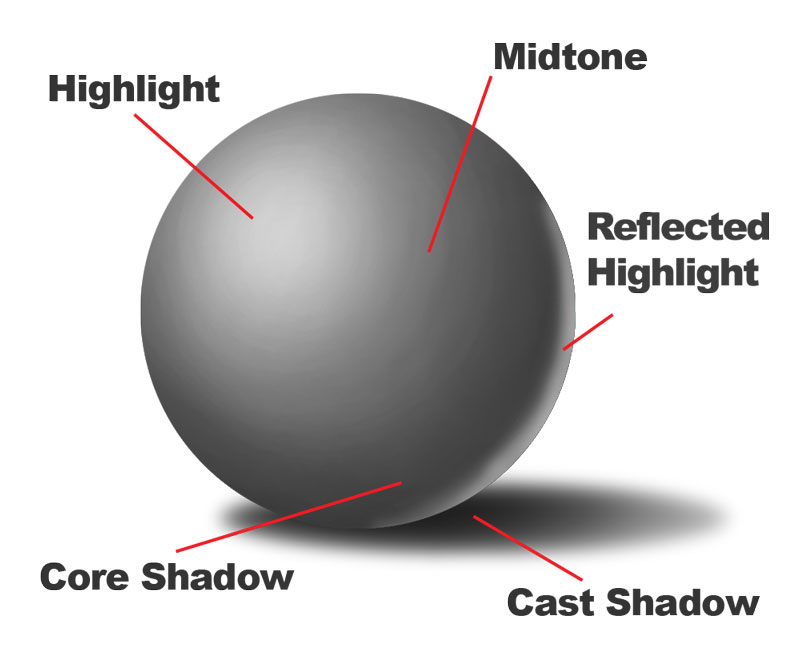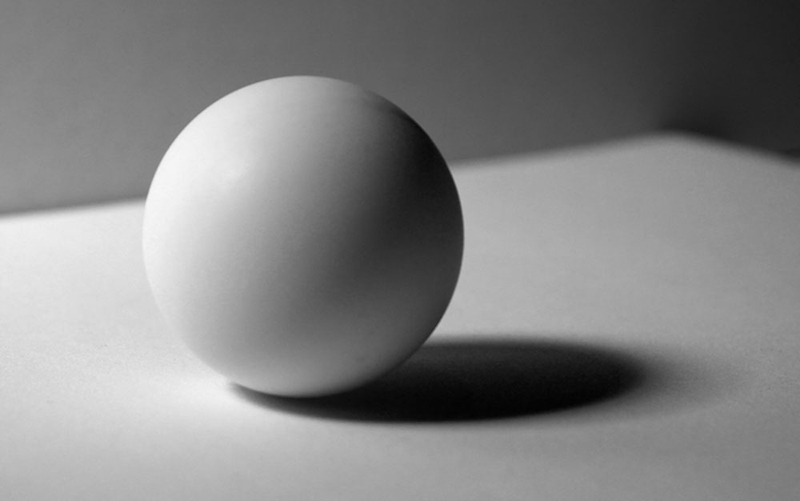Sphere Drawing Lesson Plan High
Why Draw a Sphere?
You may be wondering, "why draw a sphere?". Afterward all, in that location are so many other interesting things in the world to draw other than a sphere.
We draw a sphere as an practise. An athlete spends many hours exercising before the big game. An artist needs to practice and practice earlier tackling more circuitous subjects. These drawing exercises aid to train our encephalon to run into as an creative person and recognize the elements that we demand to address in those complex subjects.
Two Great Reasons to Practice Drawing With a Sphere
A sphere is an excellent subject to practice honing your drawing skills. At that place are two important reasons why a sphere is such a keen subject.
one. Spheres have a total range of value - Value is the darkness or lightness of a color. This important element is what informs the viewer about the light within the scene and the course of the object. A sphere, no matter how strong the light source, will nigh probable include a total range of darks and lights.

This means that you're likely to run across super dark values and light values and many unlike tones in betwixt. By drawing a sphere, nosotros can practice creating that full range of value in our drawing, paying shut attending to subtle changes in tone.
2. Locations of value are hands recognized - Non but is a total range of value important, but the locations of those values are equally important. By practicing recognizing these locations on a sphere, we are meliorate equipped to find them on more than complex subjects.
Locations of Value on a Sphere
When y'all draw any object, you must consider your light source. The light within the scene dictates where locations of value will announced on the subject. Past placing specific values in specific locations in our drawing, we can inform the viewer of the forcefulness and location of the light.
There are 5 locations of value that can be found on any bailiwick, but on a sphere, they are easy to recognize and are clearly defined.

Highlight - The highlight is location(s) of lighter value on the subject where light is striking with greatest intensity.
Midtone - The midtone is the location of center value on the subject. Typically, the midtone reflects the local colour of the field of study.
Core Shadow - The core shadow is the location(s) of darkest value on the subject. This shadow is institute on the subject reverse from the dominant light source.
Reflected Highlight - A reflected highlight is the consequence of light hitting the surface or surrounding objects and bouncing back onto the discipline within or nearly the location of cadre shadow.
Cast Shadow - Cast shadows are produced on a surface or surrounding objects when light is prevented from hitting those surfaces because the field of study is blocking the light.
Shine Gradations of Value
Some other benefit to practicing with a sphere is the gradations of value that occur. Unlike on a cube or pyramid, gradual changes of tone occur on a sphere. We can practice creating these smooth and subtle transitions.
When using a pencil, polish transitions of value tin can be created past making minor circular strokes. This technique is often referred to equally "circling". We can also modify the direction of the strokes so that they period over the cross contours of the form. The combination of both of these techniques create a smooth gradation of value in our drawings.
Time to Exercise
While a convincing sphere can exist drawn without a reference, it's ofttimes best to practise from a photo or live subject field. Instead of inventing the locations of the value and tones, we can observe them. Drawing is all about seeing.
Below you'll discover a reference photo that you can utilise to practice drawing your ain sphere...

Source: https://thevirtualinstructor.com/howtodrawasphere.html
0 Response to "Sphere Drawing Lesson Plan High"
Post a Comment